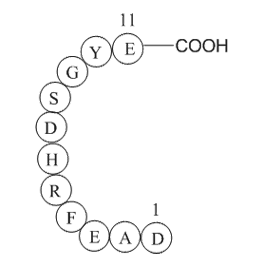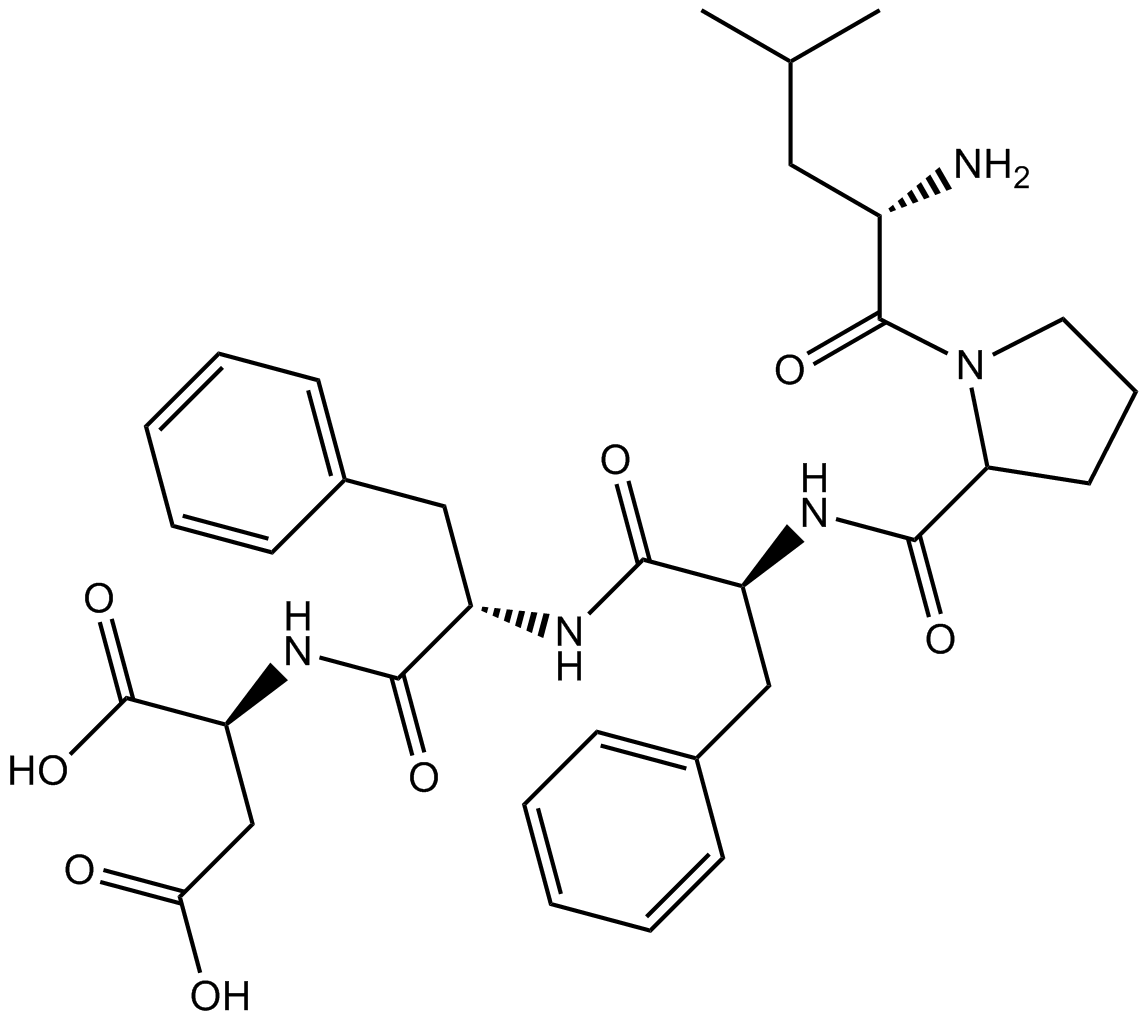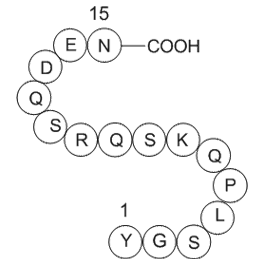amyloid A protein fragment [Homo sapiens]
Amyloid A proteins (H2N-Ala-Gly-Leu-Pro-Glu-Lys-Tyr-OH), also called Serum amyloid A (SSA) proteins, are a family of apolipoproteins associated with high-density lipoprotein (HDL) in plasma. Different isoforms of SAA are expressed constitutively (constitutive SAAs) at different levels or in response to inflammatory stimuli (acute phase SAAs).
These proteins are produced predominantly by the liver. [1] The conservation of these proteins throughout invertebrates and vertebrates suggests that SAAs play a highly essential role in all animals. [2]
Serum amyloid A (SAA) is also an acute phase marker that responds rapidly. Like CRP, levels of acute-phase SAA increase within hours after an inflammatory stimulus, but the magnitude of increase may be greater than that of CRP. Relatively trivial inflammatory stimuli can lead to SAA responses. It has been suggested that SAA levels correlate better with disease activity in early inflammatory joint disease than do ESR and CRP levels. Although SAA is largely produced by hepatocytes, more recent studies show that SAA is also produced by adipocytes and that its serum concentration is associated with body mass index. [3]
Ref:
1. Uhlar CM, Whitehead AS (1999). "Serum amyloid A, the major vertebrate acute-phase reactant". Eur. J. Biochem. 265 (2): 501–23. Fei, DTW. et al. (1980) Life Sci. 27, 1495.
2. Manley PN, Ancsin JB, Kisilevsky R (2006). "Rapid recycling of cholesterol: the joint biologic role of C-reactive protein and serum amyloid A". Med. Hypotheses 66 (4): 784–92.
3. Zhang N, Ahsan MH, Purchio AF, West DB (2005). "Serum amyloid A-luciferase transgenic mice: response to sepsis, acute arthritis, and contact hypersensitivity and the effects of proteasome inhibition". J. Immunol. 174 (12): 8125–34.
| Physical Appearance | A solid |
| Storage | Store at -20°C |
| M.Wt | 776.88 |
| Formula | C36H56N8O11 |
| Synonyms | H2N-Ala-Gly-Leu-Pro-Glu-Lys-Tyr-OH |
| Solubility | ≥26.17 mg/mL in EtOH; ≥51.8 mg/mL in H2O; ≥77.7 mg/mL in DMSO |
| SDF | Download SDF |
| Canonical SMILES | CC(N)C(NCC(NC(C(N1CCC[C@@H]1C(NC(C(NC(CCCCN)C(N[C@@H](CC2=CC=C(O)C=C2)C(O)=O)=O)=O)CCC(O)=O)=O)=O)CC(C)C)=O)=O |
| Shipping Condition | Small Molecules with Blue Ice, Modified Nucleotides with Dry Ice. |
| General tips | We do not recommend long-term storage for the solution, please use it up soon. |
Quality Control & MSDS
- View current batch:
Chemical structure
![amyloid A protein fragment [Homo sapiens]](/media/diy/images/struct/A1053.png)













